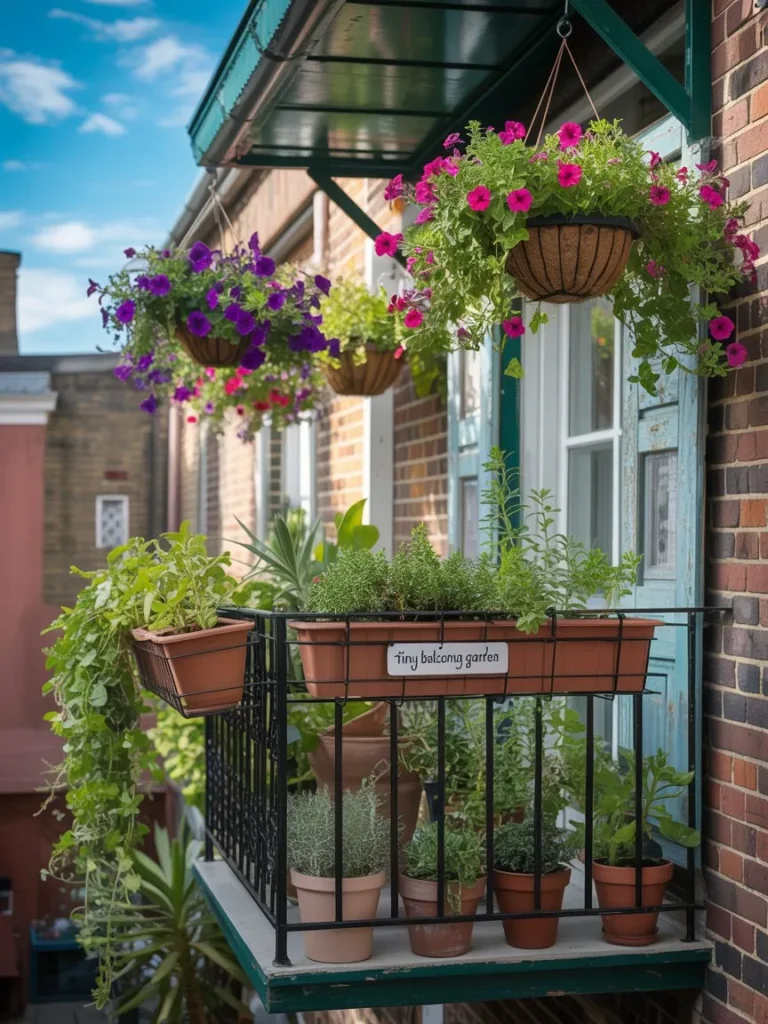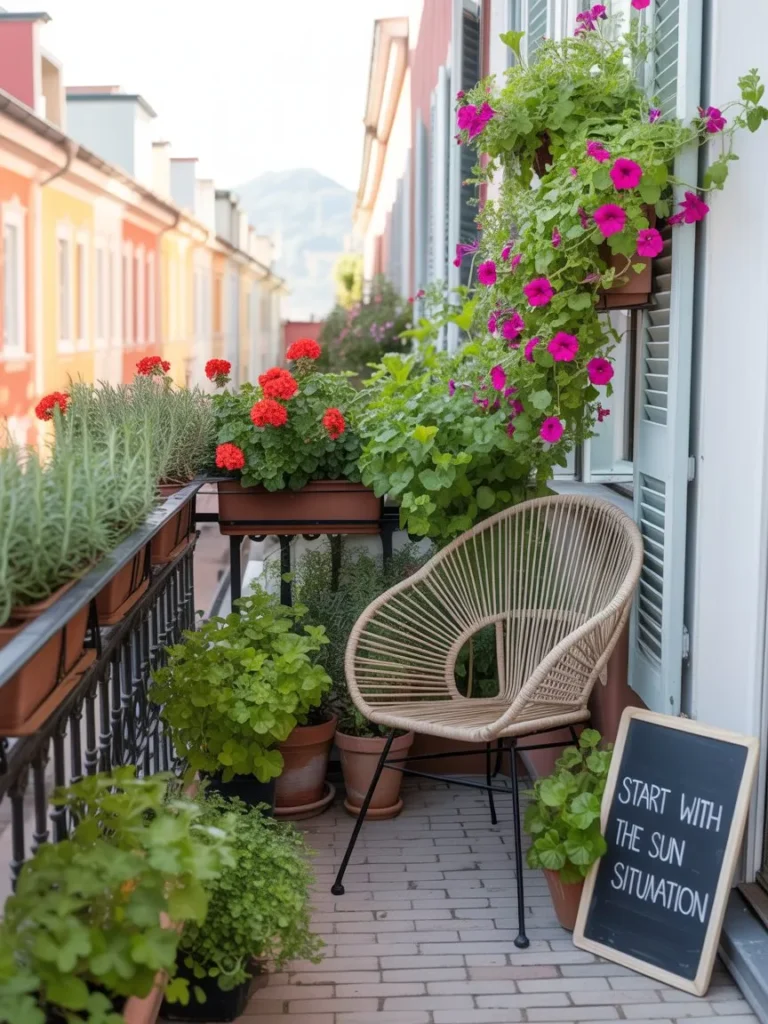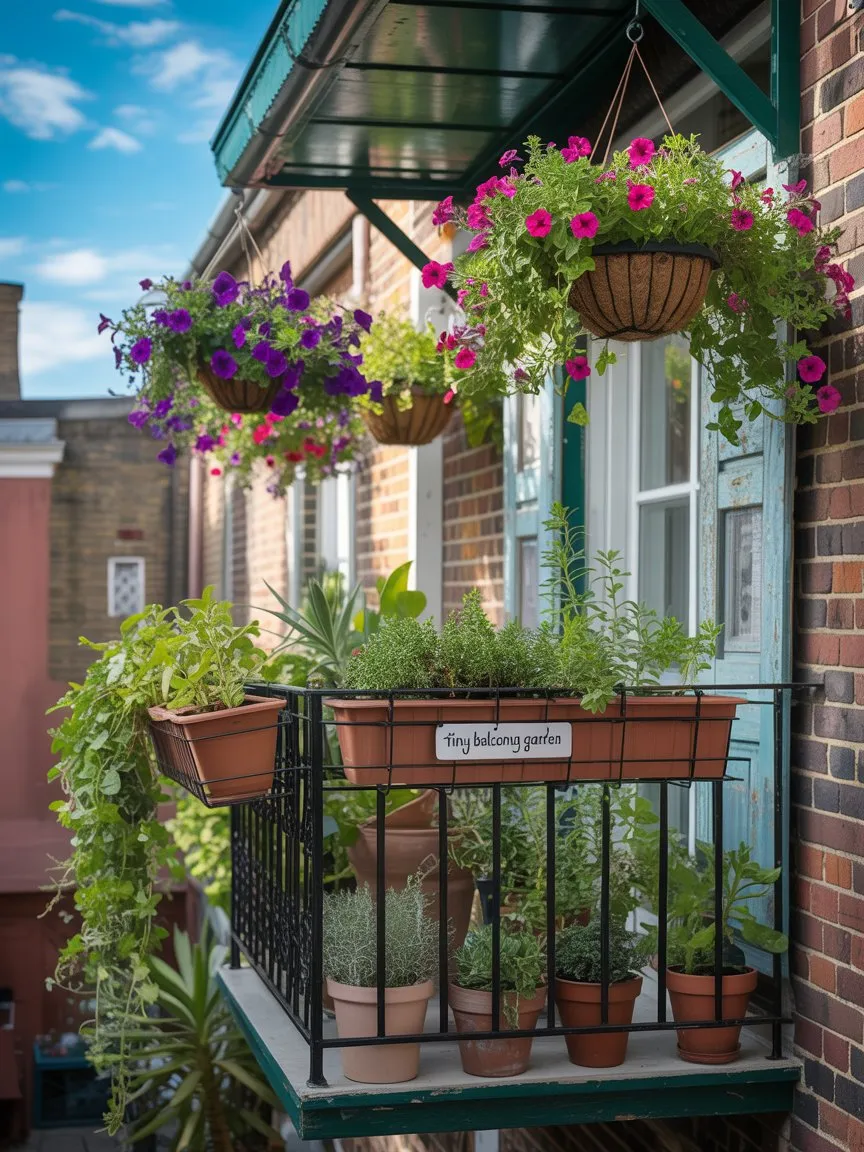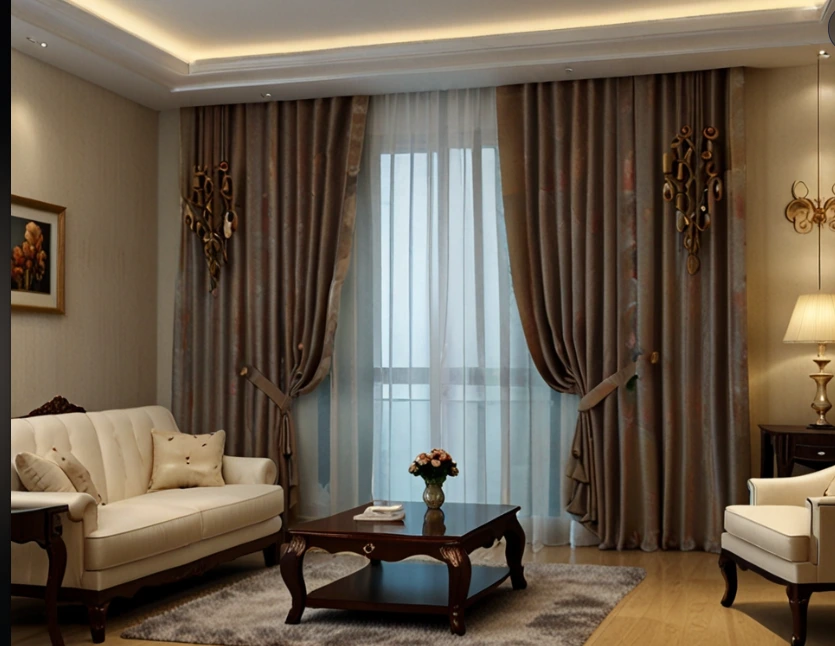Advertisement
I’ll be honest — when I first moved into my apartment, my balcony was… sad. A single folding chair, a half-dead succulent, and a view of my neighbor’s laundry line. It was basically a forgotten storage corner that occasionally caught some sun.
Then one spring morning — coffee in hand, hair in questionable condition — I decided to change it. I wanted my balcony to feel like a little escape. Not “five-star rooftop bar” level (my budget laughed at that idea), but something that could make me forget I was surrounded by concrete and car horns.
Fast-forward a few months, and my once-bare balcony now looks like a tiny green jungle. Bees occasionally visit. My herbs are thriving. My cat believes it’s her personal safari. And all of this happened without needing a yard, a landscaper, or a bottomless wallet.

This image is by AI for inspiration only.
If you’re staring at your small outdoor space thinking, There’s no way I can turn this into anything magical, let me assure you — you absolutely can. Here’s how.
Start with the Sun Situation
Before you go plant-shopping, figure out what your balcony’s light is actually like. Morning sun? Full blast all day? Only a brief golden hour in the afternoon?
Pro tip from my own mistakes: I once tried growing strawberries on a shady balcony. They sulked for months and gave me exactly one berry… which a pigeon stole.
If you have:
Full sun (6+ hours/day): Tomatoes, basil, lavender, and most flowers will thrive.
Partial sun (3–6 hours/day): Mint, lettuce, pansies, and herbs like parsley.
Shade (under 3 hours/day): Ferns, peace lilies, and ivy.
Knowing this upfront saves you heartbreak (and dead plants).

This image is by AI for inspiration only.
Advertisement
Advertisement
Choose Pots That Pull Double Duty
In small spaces, your containers should work hard. Go for planters that are both functional and decorative.
Ideas:
Hanging baskets for trailing plants like petunias or strawberries.
Vertical wall planters for herbs.
Tiered plant stands to pack more greenery without eating up floor space.
Visual moment: On my balcony, I have a mismatched set of ceramic pots — one shaped like a sleeping cat, another that looks like it’s been dipped in gold paint. Together, they feel less “coordinated set” and more “collected over years of adventures.”
Think Vertical
When floor space is limited, go up. Vertical gardening not only makes the most of your area, it also creates a lush, layered look.
Options to try:
A trellis for climbing plants (morning glories, sweet peas).
Hanging shelves for small potted herbs.
Stackable planters that grow strawberries or lettuce in tiers.
Apartment hack: I used an old wooden ladder as a plant shelf. A coat of pastel paint later, it’s my favorite corner — and it didn’t cost a thing because I “rescued” it from my uncle’s garage.
Grow Edible Greens (Because Snacks)
There’s something magical about stepping outside and snipping basil for pasta or mint for iced tea. Even in a tiny balcony garden, you can grow food.
Beginner-friendly edible plants:
Basil, mint, parsley, chives
Cherry tomatoes
Lettuce or spinach
Strawberries
Real talk: Homegrown cherry tomatoes taste like candy. You’ll never look at store-bought ones the same way again.
Create a Cozy “Sit and Sip” Spot
Even if your balcony is small, carve out a little nook to actually enjoy your garden.
You might only have space for:
A foldable bistro table and chair.
A floor cushion with a small side table for your coffee.
A hammock chair (if you can hang it safely).
Scene: Early morning, you’re curled up with a blanket and a steaming mug, plants softly rustling in the breeze. City noise still exists, but it feels far away.
Play with Color and Texture
Tiny balconies can still pack a visual punch. Mix different leaf shapes, colors, and heights so your garden feels abundant.
Combos to try:
Trailing ivy with tall lavender.
Bright marigolds next to deep green herbs.
Succulents in textured pots alongside leafy ferns.
Whimsical touch: I have one pot painted in polka dots and another wrapped in jute rope — both DIY jobs that took under an hour.
Add a Little Glow for Evenings
Balcony gardens aren’t just for daytime. With the right lighting, they can become magical little retreats after sunset.
Lighting ideas:
String fairy lights along the railing.
Solar lanterns tucked between pots.
LED candles in mason jars for a warm glow.
I swear my balcony looks twice as romantic at night — and my plants seem to like the attention.
Make it Wildlife-Friendly (Even in the City)
Even small spaces can be tiny ecosystems.
Ways to invite visitors:
A shallow dish of water for birds.
Bee-friendly flowers like lavender or echinacea.
A mini insect hotel (they’re surprisingly cute).
Unexpected joy: Watching a butterfly land on my balcony hibiscus while I was watering herbs made me feel like Snow White… if she lived on the third floor and paid rent.
Use Every Inch
Don’t forget corners, railings, and even ceilings. You can hang planters, attach railing boxes, or use slim shelving.
Small-space trick: Mount a narrow shelf along one side to hold plants and your morning coffee.
Keep It Low-Maintenance (So You Actually Enjoy It)
If you travel often or don’t want to spend hours watering, choose plants that can handle a little neglect. Succulents, snake plants, and hardy herbs like rosemary are champions at surviving less-than-perfect care.
A cheap upgrade: self-watering pots. They keep soil moist longer and make plant-parent life easier.
Final Thoughts: Your Personal Green Oasis Awaits
A tiny balcony doesn’t have to be a sad, forgotten corner. With a little planning, a bit of creativity, and some personality in your plant choices, you can transform it into a thriving green escape.
The best part? You don’t need a huge budget or a landscaping degree — just a willingness to experiment, get your hands a little dirty, and maybe lose track of time while rearranging pots on a sunny afternoon.
Now if you’ll excuse me, my mint is calling. It’s Mojito o’clock somewhere.



